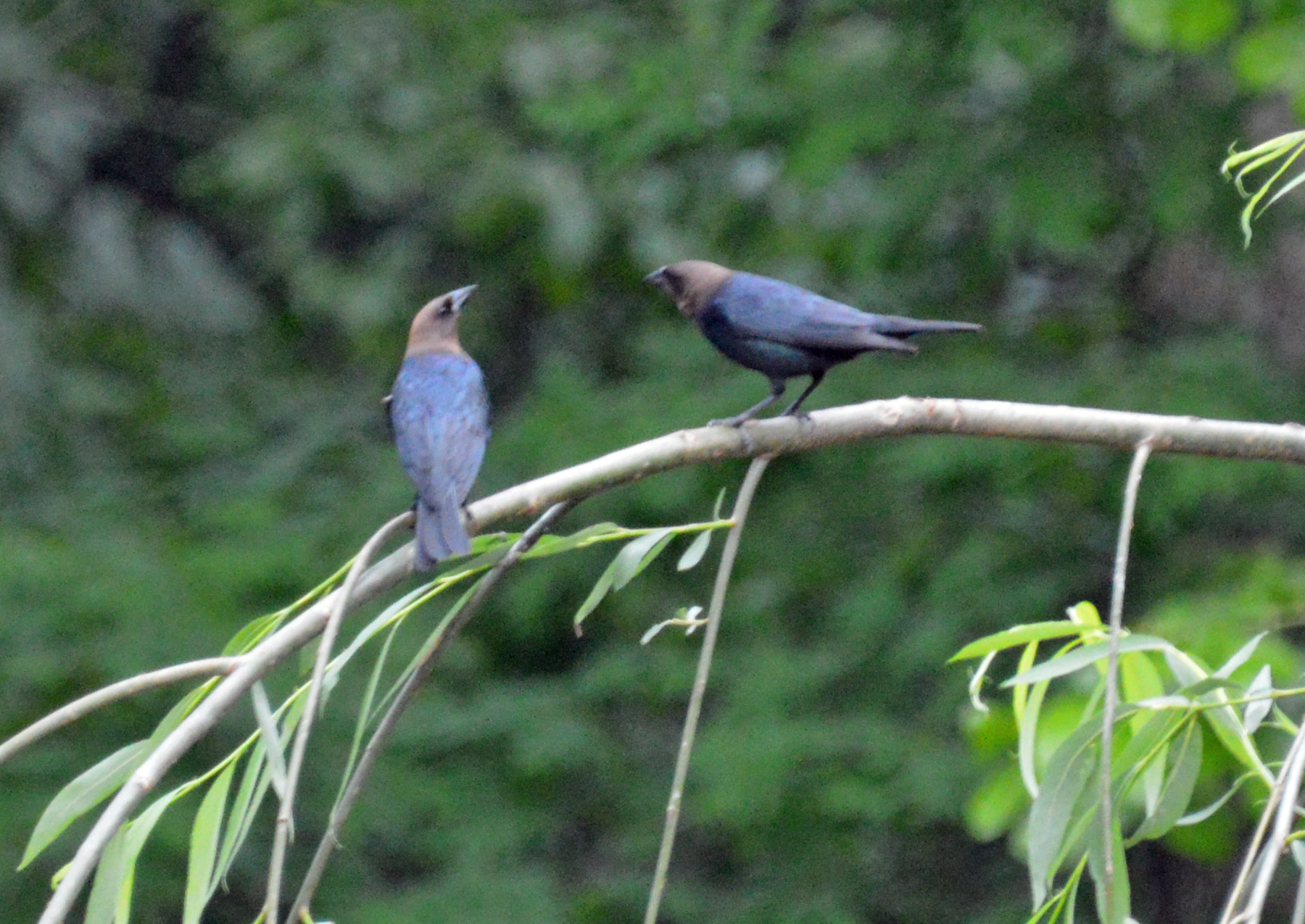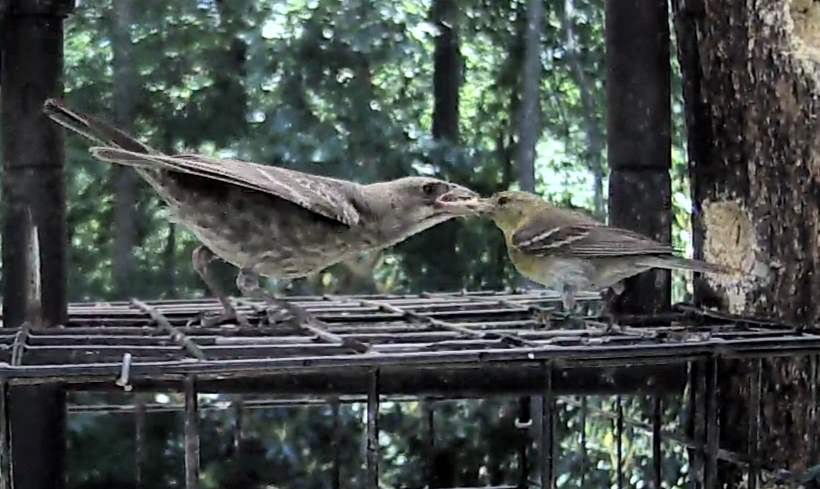
Male Cowbirds
The Brown-headed Cowbird is on my "Least Wanted" list. They show up in large numbers in October (and remain through early summer). They are piggy. They are bullies. The worst, however, is yet to come.
Cowbirds got their name from the fact that they follow herds of cattle. As the cattle graze, insects are flushed from the grasses providing a feast for the Cowbirds. The thing is, if you follow a cattle herd, you don't have a home base. Cowbirds adapted their nesting habits accordingly. They simply deposit an egg (as many as 40 eggs/season/female) in the nest of other birds. (They often remove one of the host's own eggs.) This is called "brood parasitism". Cowbirds have been known to parasite the nests of over 200 species of birds.
Indeed, this is a brilliant adaptation.
Unfortunately, many of the nests parasitized by Cowbirds are of bird species much smaller than the Cowbirds. The Cowbird egg typically hatches one day earlier than the host eggs -- giving it a head start on growth. With this head start, the naturally larger, and often faster-growing, Cowbird hatchling garners the majority of food brought to the nest by the host parent/s. The host's own hatchlings often fail to thrive.

Cowbird Fledgling (Left) Being Fed by Adult Pine Warbler (Right)
I Dread the Day
I dread the day one of my on-camera nests gets parasitized. First, it is illegal to destroy eggs of a native species -- including Cowbird eggs. If I got past that, I'd have to confront my "do no harm rule". When you see the adult male doing his most-macho mating dance, or the recently-fledged baby Cowbird seeking food/attention presumably from the "adoptive parent" -- you just can't ascribe evil to creation. That said, when you watch the video, you might ascribe "not the brightest bulb on the tree" to the young cowbirds who seem to like to be hammered on the head.